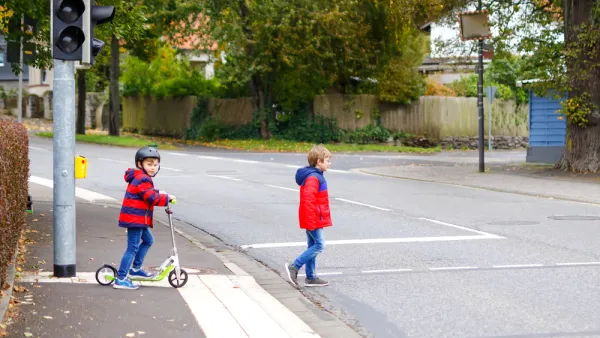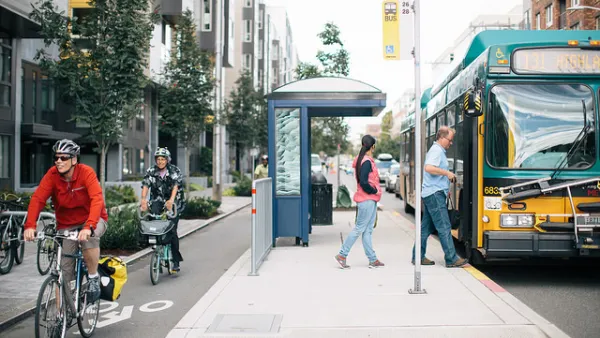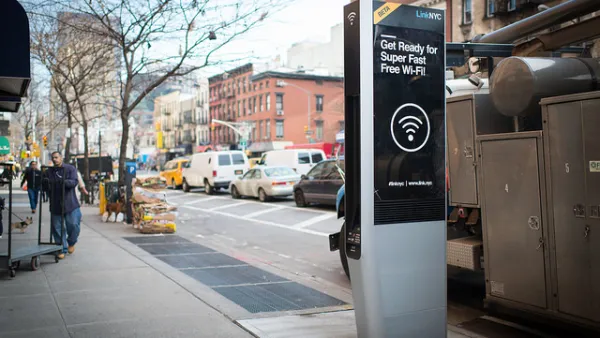A few weeks ago, I read a newspaper article commenting on a pedestrian who was killed in a car crash; the article suggested “educating pedestrians to cross at intersections.” But sometimes, some pedestrians are actually safer crossing mid-block. Here’s why: when I cross at the intersection nearest my suburban apartment, I have to look for traffic coming from a variety of directions: not just oncoming drivers in both directions who might run red lights, but also drivers turning from the corners of the intersection.
A few weeks ago, I read a newspaper article commenting on a pedestrian who was killed in a car crash; the article suggested "educating pedestrians to cross at intersections." But sometimes, some pedestrians are actually safer crossing mid-block.
Here's why: when I cross at the intersection nearest my suburban apartment, I have to look for traffic coming from a variety of directions: not just oncoming drivers in both directions who might run red lights, but also drivers turning from the corners of the intersection.
By contrast, if I cross in midblock, I only have to look at traffic coming in one direction at a time: in the northbound lane I look for traffic heading north, in the southbound lane for traffic heading south. So if there's not any traffic, I run for it.
On the other hand, midblock crossings are not for everyone. In the suburban area where I live, traffic goes very fast when it goes- but at times congestion is low enough that there are no cars nearby. So crossing anywhere near a car is dangerous because any crash is likely to be fatal - while on the other hand when there is no nearby traffic, crossing is safe regardless of the location.
On the other hand, in a more urban and/or congested environment where traffic flows more evenly, there will always be a few cars near you in the oncoming lane- so in that situation, midblock crossings are less safe. (And the slower traffic means that even if you are in the intersection, your risk of being seriously injured by a crash is lower).
And if you are too young or too visually impaired to see whether there are cars nearby, there is, alas, no good alternative to relying on traffic signals.

National Parks Layoffs Will Cause Communities to Lose Billions
Thousands of essential park workers were laid off this week, just before the busy spring break season.

Retro-silient?: America’s First “Eco-burb,” The Woodlands Turns 50
A master-planned community north of Houston offers lessons on green infrastructure and resilient design, but falls short of its founder’s lofty affordability and walkability goals.

Delivering for America Plan Will Downgrade Mail Service in at Least 49.5 Percent of Zip Codes
Republican and Democrat lawmakers criticize the plan for its disproportionate negative impact on rural communities.

Test News Post 1
This is a summary

Test News Headline 46
Test for the image on the front page.

Balancing Bombs and Butterflies: How the National Guard Protects a Rare Species
The National Guard at Fort Indiantown Gap uses GIS technology and land management strategies to balance military training with conservation efforts, ensuring the survival of the rare eastern regal fritillary butterfly.
Urban Design for Planners 1: Software Tools
This six-course series explores essential urban design concepts using open source software and equips planners with the tools they need to participate fully in the urban design process.
Planning for Universal Design
Learn the tools for implementing Universal Design in planning regulations.
EMC Planning Group, Inc.
Planetizen
Planetizen
Mpact (formerly Rail~Volution)
Great Falls Development Authority, Inc.
HUDs Office of Policy Development and Research
NYU Wagner Graduate School of Public Service






























